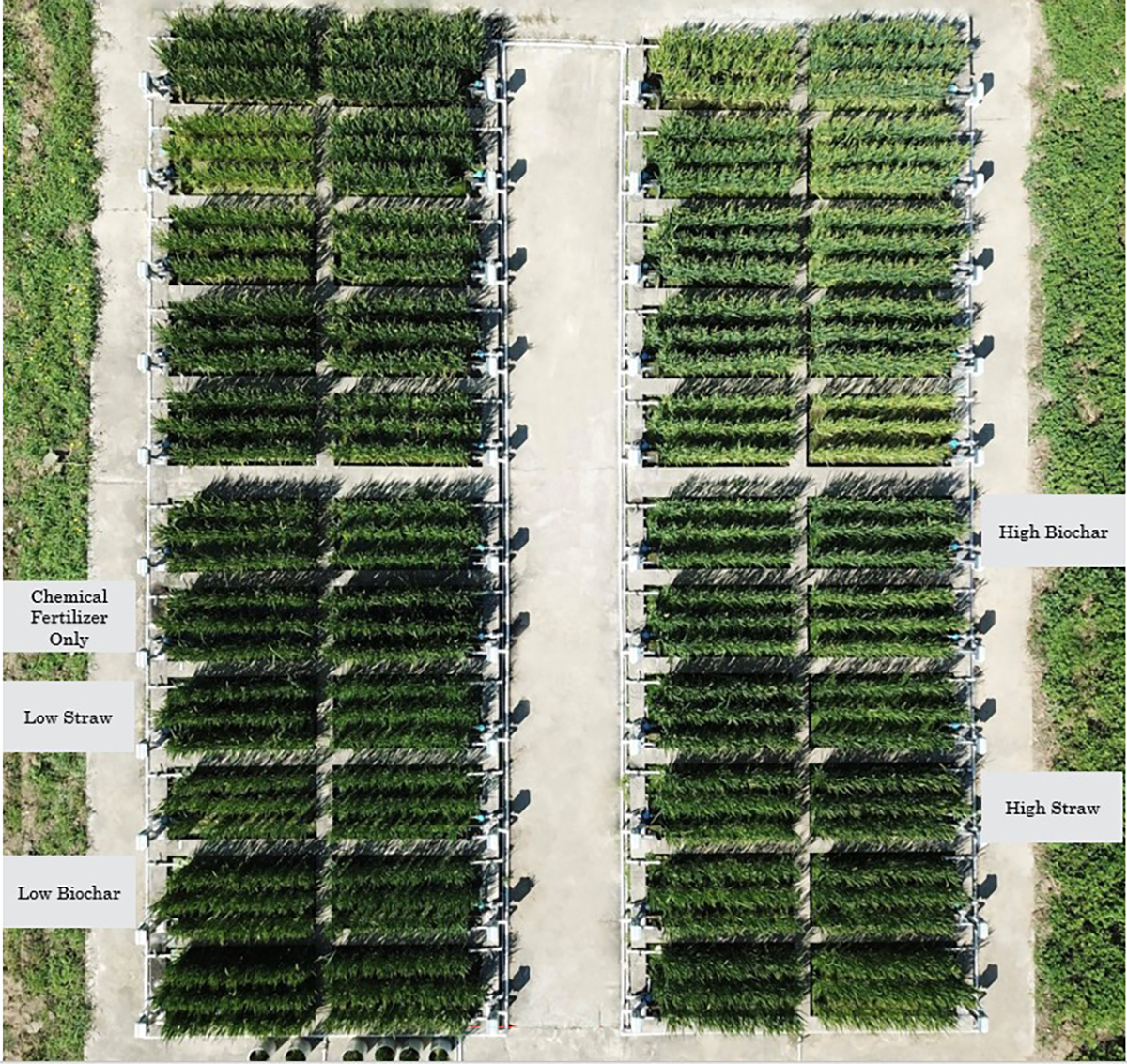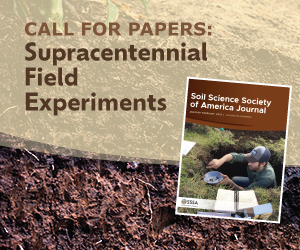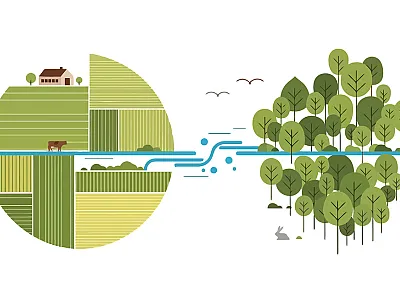Rice straw and biochar reduce reliance on fertilizer

The photo above shows the distinct effects of two organic amendments—rice straw and biochar—applied at varying rates as a partial substitute for chemical fertilizer. Contrasts in canopy development demonstrate that both the type and the application rate of the amendment significantly influence rice growth patterns. Labels indicate one representative replication of a treatment from a randomized field trial. Photo courtesy of Ning An, Wei Han, and Xiaori Han (Shenyang Agricultural University).
Excessive use of fertilizers in rice paddies can cause nutrient leaching and other environmental concerns. Improving the sustainability of rice cultivation requires strategies that maintain yield while building soil health and reducing reliance on chemical fertilizers. Recycled rice straw and its pyrolyzed biochar form are both promising amendments that can partially replace traditional chemical fertilizers.
While some short-term studies have already analyzed the potential of straw and biochar, long-term research in how these amendments perform as partial substitutes for chemical fertilizer in a rice production system are needed. A seven-year field study in Northeast China specifically investigated the effects of different application rates of rice straw and its biochar on soil properties and crop productivity.
Averaged over seven years, both low-dose straw and low-dose biochar treatments produced rice yields equivalent to conventional fertilization. These amendments improved soil structure, which enhanced root development and compensated for the reduced fertilizer input. A critical finding was that low-dose straw was markedly more effective than low-dose biochar, significantly improving soil macroporosity and root growth, and achieving a 27.3% higher nitrogen use efficiency. In contrast, higher application rates of either straw or biochar were found to reduce the average grain yield.
The study demonstrates that partially replacing fertilizer with either low-dose rice straw or biochar represents a viable long-term strategy for paddy fields. Both approaches maintain yields while improving soil health, offering practical pathways to enhance sustainability in rice-farming systems.
Dig deeper
An, N., Zhang, L., Schoenau, J. J., Liu, Y., Ren, B., Wu, Z., Han, W., & Han, X. (2025). Seven-year straw and biochar amendments modulate soil pore structure, nutrient availability, and nitrogen partial factor productivity. Agronomy Journal, 117, e70171. https://doi.org/10.1002/agj2.70171
Text © . The authors. CC BY-NC-ND 4.0. Except where otherwise noted, images are subject to copyright. Any reuse without express permission from the copyright owner is prohibited.









